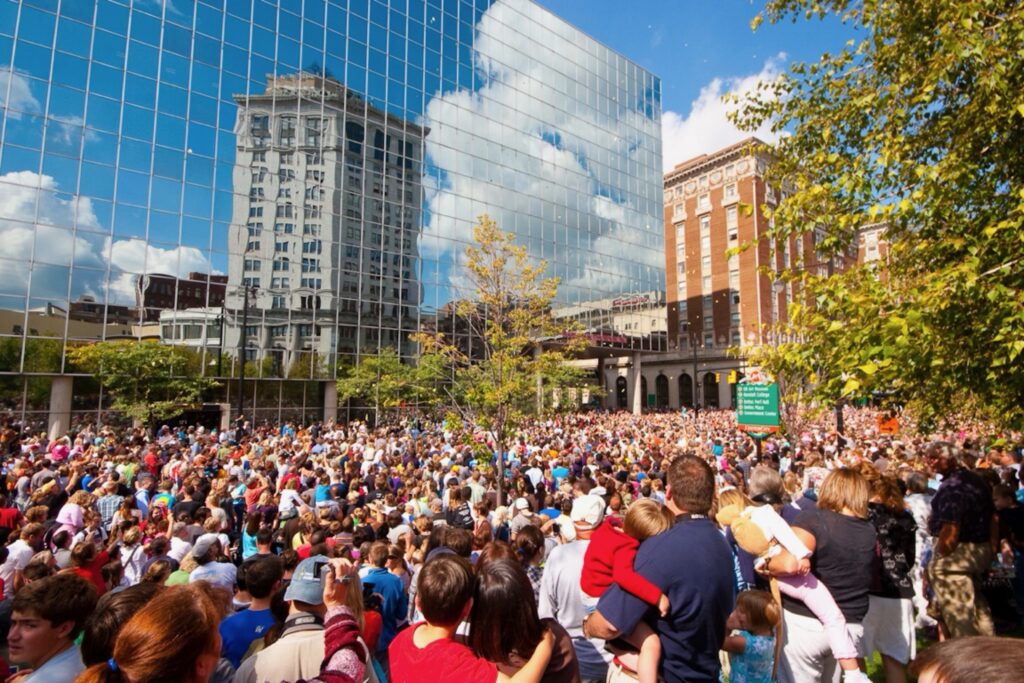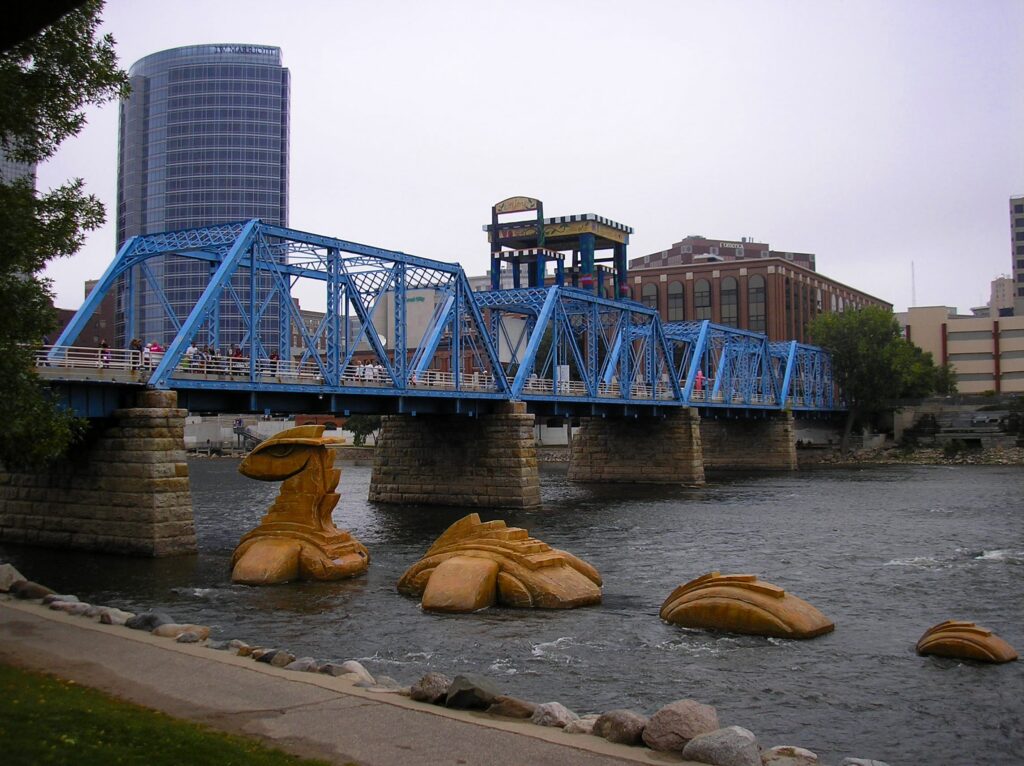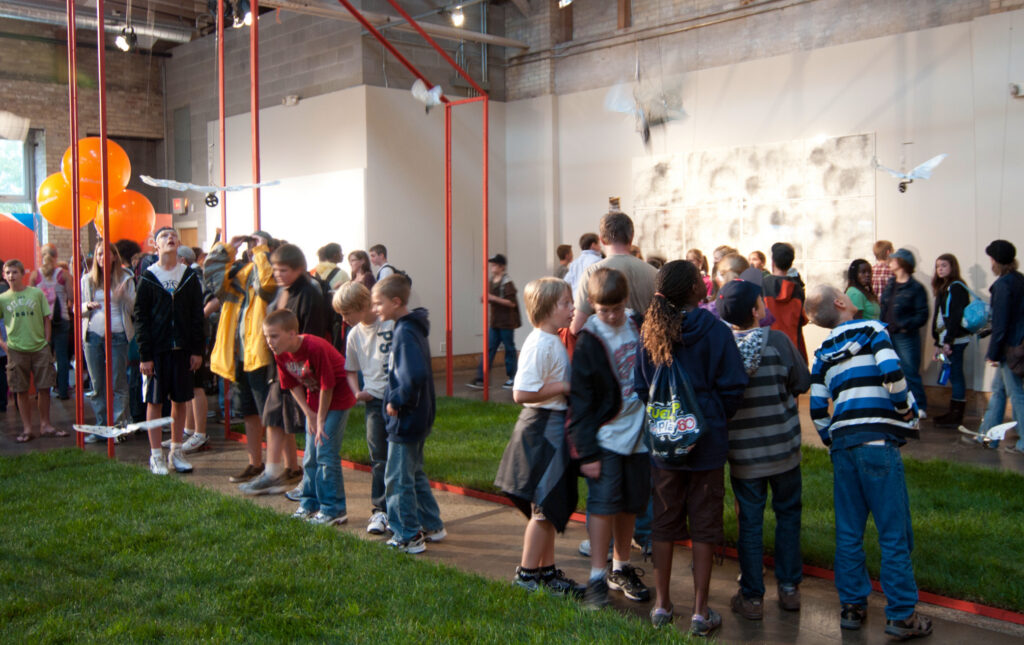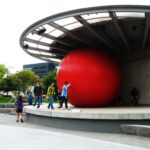This year marks the 15th anniversary of ArtPrize–a signature event in Grand Rapids, MI that also happens to be one of the largest art competitions in the world. I had the honor of leading the organization for the first two and a half years, helping lay the foundation for what has become a mostly beloved–and sometimes reviled–tradition in Grand Rapids. The idea we had in 2009 wasn’t “how do we shake up the traditional art world?”, but rather “how do we activate spaces so people could imagine what a vibrant place Grand Rapids could be?”Looking back, I feel proud of the design principles we put in place, the spectacle we injected into each year, and the moments of joy that emerged both from the community and our planning.

At its core, ArtPrize was built on a few guiding principles: openness, participation, and community. We wanted the event to be accessible to all—artists from around the globe and every citizen of Grand Rapids. There were no walls, no velvet ropes. We believed art should belong to the public, where it could challenge, inspire, and delight. This was a central idea as we designed the structure of the event. It had to feel organic yet grand, intimate but surprising. My hope was always to infuse each year with an element of spectacle and delight—something unexpected that would leave a lasting memory.

The Original Design Principles of ArtPrize
In the early days, we anchored our decision-making around five core design principles. These principles acted as our North Star, guiding every choice we made as we shaped and tried to make sense of the fledgling ArtPrize.
PRIZE = CATALYST
From the beginning, we made it clear that the prize was never meant to validate creative output. Yes, the winning pieces over the years have been impressive, but often, they weren’t necessarily the “best” pieces in the competition. ArtPrize was always intended to be the world’s largest excuse to get creative—a way to push artists, venues, and even the community to take the event into their own hands. The prize served as a catalyst, a spark, not the end-all, be-all. It was an open invitation for creativity to thrive in unexpected ways.
SIMPLE = COMPLEX
Another core belief we built into ArtPrize was that simplicity can lead to complexity. The rules and requirements for artists, voters, and venues were intentionally kept open. We avoided imposing boundaries, trusting that this openness would lead to unexpected and remarkable outcomes. People often asked us, “What do I use this for?” Our response was always, “What do you use this for?” The beauty of ArtPrize was that there was no singular way to engage with it. By keeping things simple, we created the space for participants to explore, innovate, and surprise themselves and each other.
ART = COMMUNITY
Art was always the focus of ArtPrize, but the community was the true main event. The competition invited people to step away from their daily routines and rally around the idea that art is important. Whether it was residents opening up their businesses as venues or thousands of voters casting their ballots, ArtPrize turned art into a communal celebration. It wasn’t just about what was hanging on the walls or installed in public spaces; it was about how the entire city came together to experience and elevate art.
IDEA = ACTION
We designed ArtPrize to be an environment where ideas could quickly turn into action. It was never just about winning the prize—it was about the journey from imagination to action. That journey was inherently rewarding. We wanted participants, whether artists or voters, to feel like they were playing a game, and that was intentional. Play makes people more engaged, open to new ideas, and more willing to experiment. Learning was experiential at ArtPrize, and our mantra was simple: Play is okay.
YOU = CREATOR
As the organizers, we understood that our role was just a small part of the whole ecosystem. ArtPrize wasn’t just for the artists—it was for everyone. The community, the venues, the voters—all of them were essential creators of the event. We were all responsible for what ArtPrize became each year. It was a shared responsibility, a collective effort. The creativity that emerged wasn’t limited to artists, and that was the magic of ArtPrize—every player in the ecosystem had a hand in shaping it.

Looking Ahead
As the next chapters of ArtPrize unfold, I’m excited to see where new leadership will take the event. I’m optimistic that they’ll honor the spirit of the original design principles but also bold enough to forge new paths that reflect our ever-changing culture. My hope for them is this: Don’t just recreate the past—there’s so much more opportunity ahead. Be daring. Consider what shape ArtPrize could take and ensure it resonates with the world we live in today.
I’m reminded of a quote by Pablo Picasso, who once said, “Art is a lie that makes us realize the truth.” Art has this incredible ability to challenge the status quo, to push against the boundaries of what we know and what we’re comfortable with. But art can also be playful and beautiful—it can make us smile while making us think. That’s the delicate balance we tried to achieve in those early years at ArtPrize.
I am grateful for being a part of its journey and am so curious about what the future of ArtPrize will bring.

